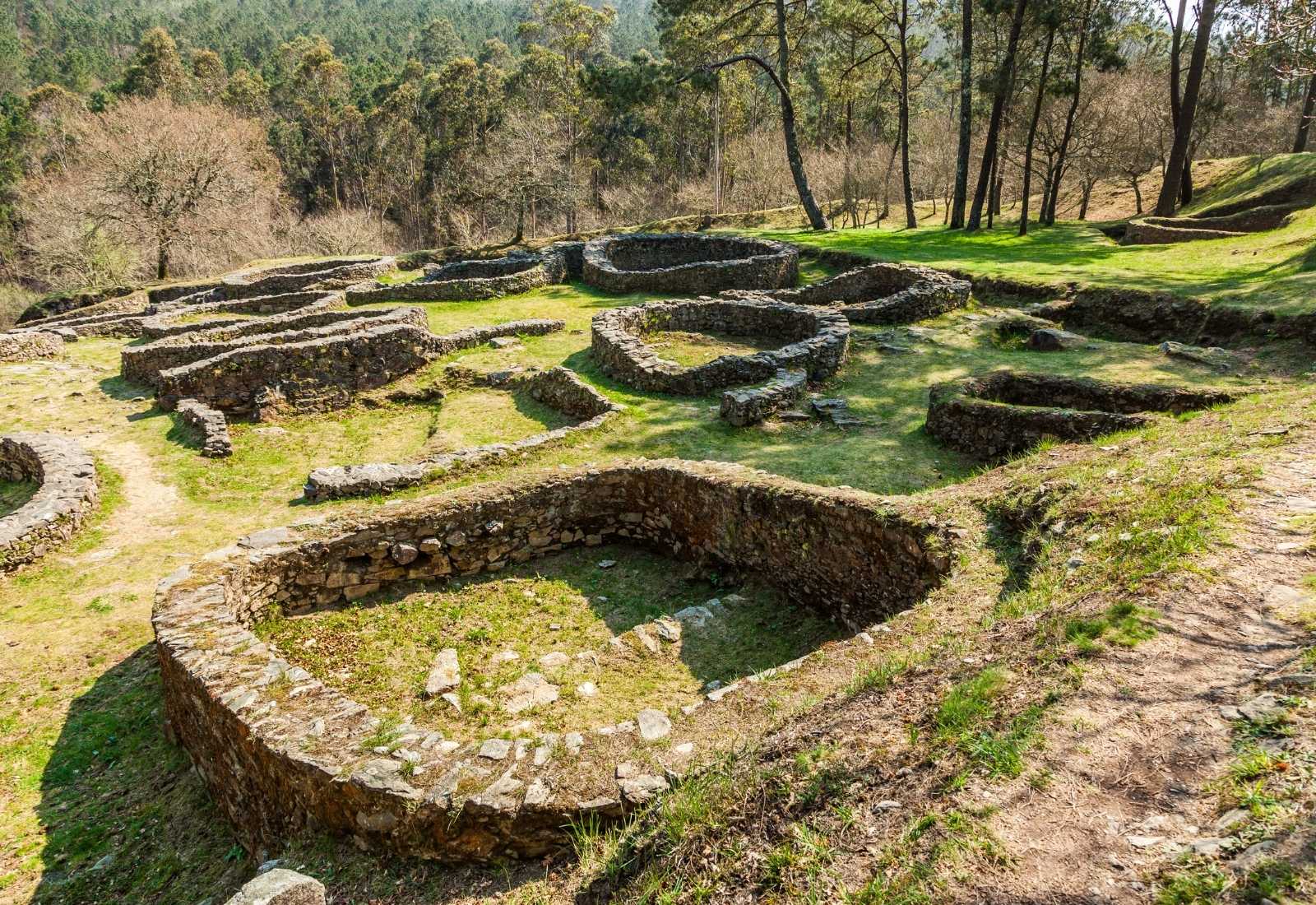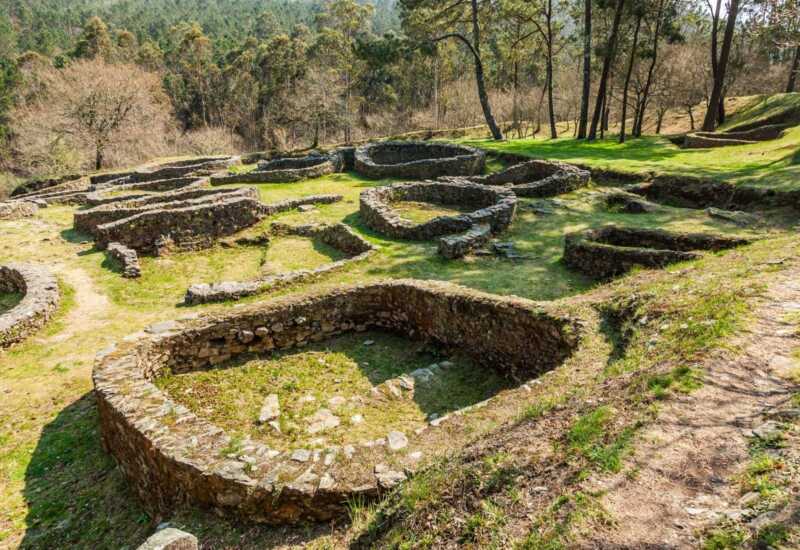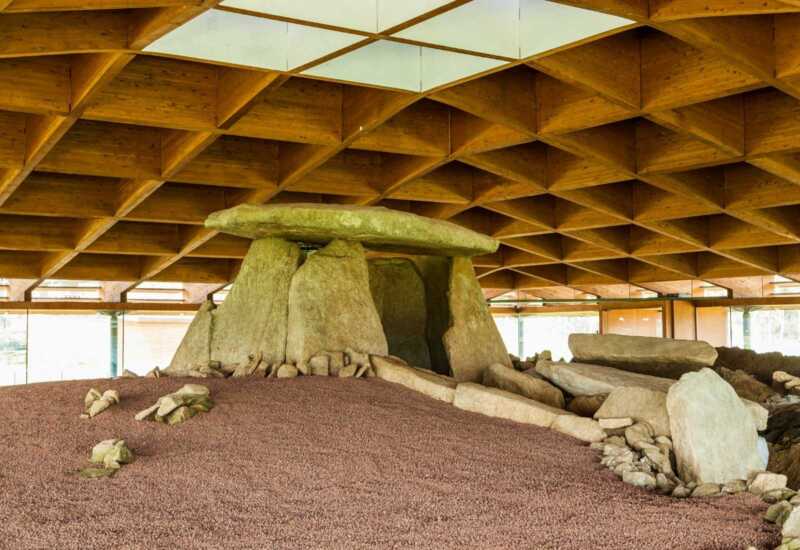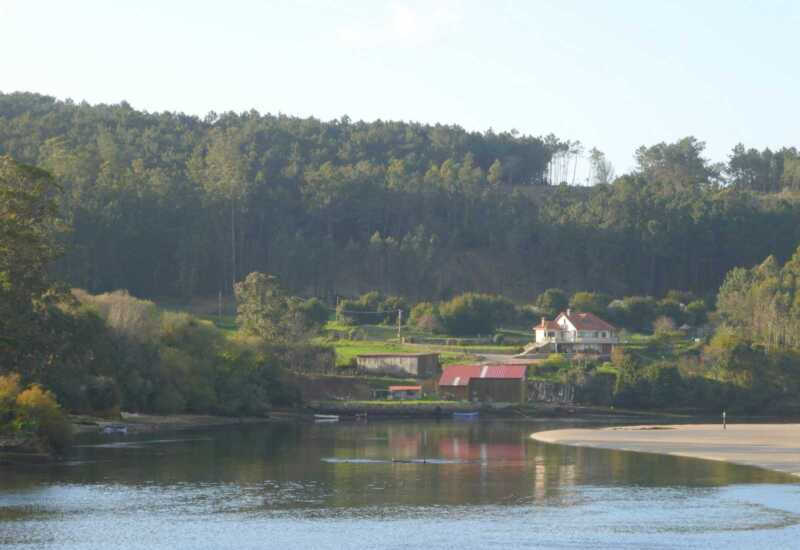
Information about Cabana de Bergantiños
The territory and coastline of Cabana de Bergantiños is friendlier and sweeter than the rest of the municipalities of the Costa da Morte, as it is located between the estuary of the Anllóns River and Laxe Beach. The tranquillity of the beginning of the estuary, with the dune landscape of the beach of A Barra on the other side of the estuary of Corme and Laxe, make this small council, through the path of the river Anllóns, a good place for recreation, walking and bathing in its calm waters.
What to see and do in Cabana de Bergantiños
Castro de Borneiro
A real jewel of the northwest of the peninsula as far as the castrexa culture is concerned, and which is also known as “A Cidá” (the city in Galician), a toponym widely used in Galicia for this type of archaeological remains. Dated between the 4th and 1st centuries BC, it is one of the few examples that was not Romanized. Discovered in 1924 and excavated in the 1930s, 1970s and 1980s, it has up to 36 circular and oval constructions, as well as an oven and a walled area. In addition, many remains of movable art from the site can be seen in the Archaeological Museum of A Coruña.
Dolmen of Dombate
Deservedly called the Cathedral of Galician Megalithic, this funerary construction is the best example of this typology in Galicia. Dated from the IV millennium B.C., it is very well recovered, musealized, protected within a Archaeological Centre and of course, it can be visited. In its burial mounds, samples of engravings and cave paintings can also be observed. Together with the nearby Castro de Borneiro, between them they make up a visitable group of great patrimonial value.
Route of Rego dos Muíños
It is a linear route of approximately 5.5 kms in length along the Rego or Riachuelo dos Muíños (mills in Galician). It is a route marked R3, simple and dotted with at least 24 old mills through a beautiful forest of oaks, chestnuts, birches, ferns and mosses. With several restored mills, you can play Indiana Jones and look for the crosses engraved on the stones of the door frames and openings.
Path of the Anllóns River
Shortly after leaving the neighbouring town of Ponteceso, you will find a beautiful coastal path that starts at the estuary of the Anllóns River. This is an important natural area of Galicia, where you will find bucolic beaches, native and migratory birds, as well as old boats that take us back to the time when the old trades, such as carpentry, were very important in the economy of this area.













